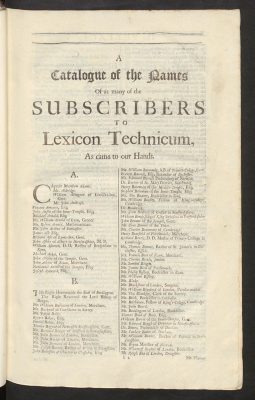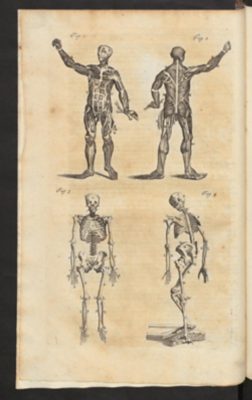During the second half of my one-year internship in the Iron Library and the GF Corporate Archives, I wrote my master's thesis in information science. Since I was also concerned with the history of encyclopedia – from the editions of the 18th century to Wikipedia – my attention was drawn to a book published in 1704 that was on one of the bookshelves in the Ernst Müller Room.
Its author, John Harris (1666–1719), a London clergyman and amateur mathematician, can be seen as the pioneer of the alphabetically ordered scientific encyclopaedia. Harris lived in one of the most important periods of academic progress. He drew primarily on the research of his able contemporaries (e.g. Sir Isaac Newton) in scientific fields and deliberately sought to describe 'modern' advances. Thus Harris succeeded in compiling the first encyclopaedia in two volumes (volume two was published in 1710), which are generally up-to-date, comprehensive and detailed, as mentioned in the title, on the subjects of technology and science. The work includes entries on law, surgery, anatomy, geometry and mathematics, fortification, botany and music, among others. Anyone who thinks that this 'primeval' encyclopaedia contains only text passages is mistaken. Detailed illustrations – on human bone structure to geometric bodies – complement the work and increase the educational value of this teaching aid.
Harris' work also served as a model for other highly acclaimed later European encyclopaedias: Ephraim Chambers' Cyclopaedia (1728, England) and Denis Diderot and Jean le Rond d'Alembert's Encyclopédie (1751–1780, France), both of which, incidentally, can also be found in the Iron Library's collection.








